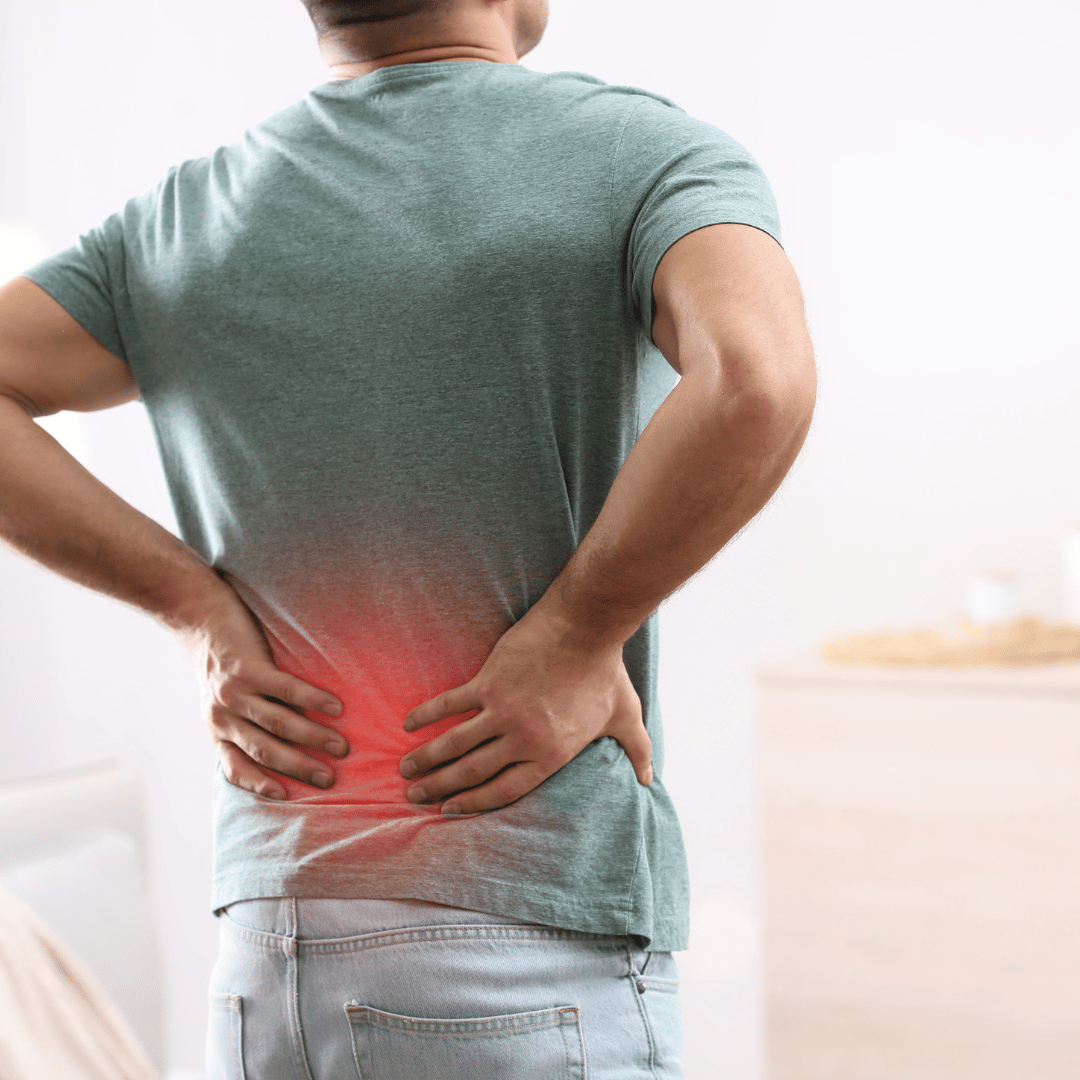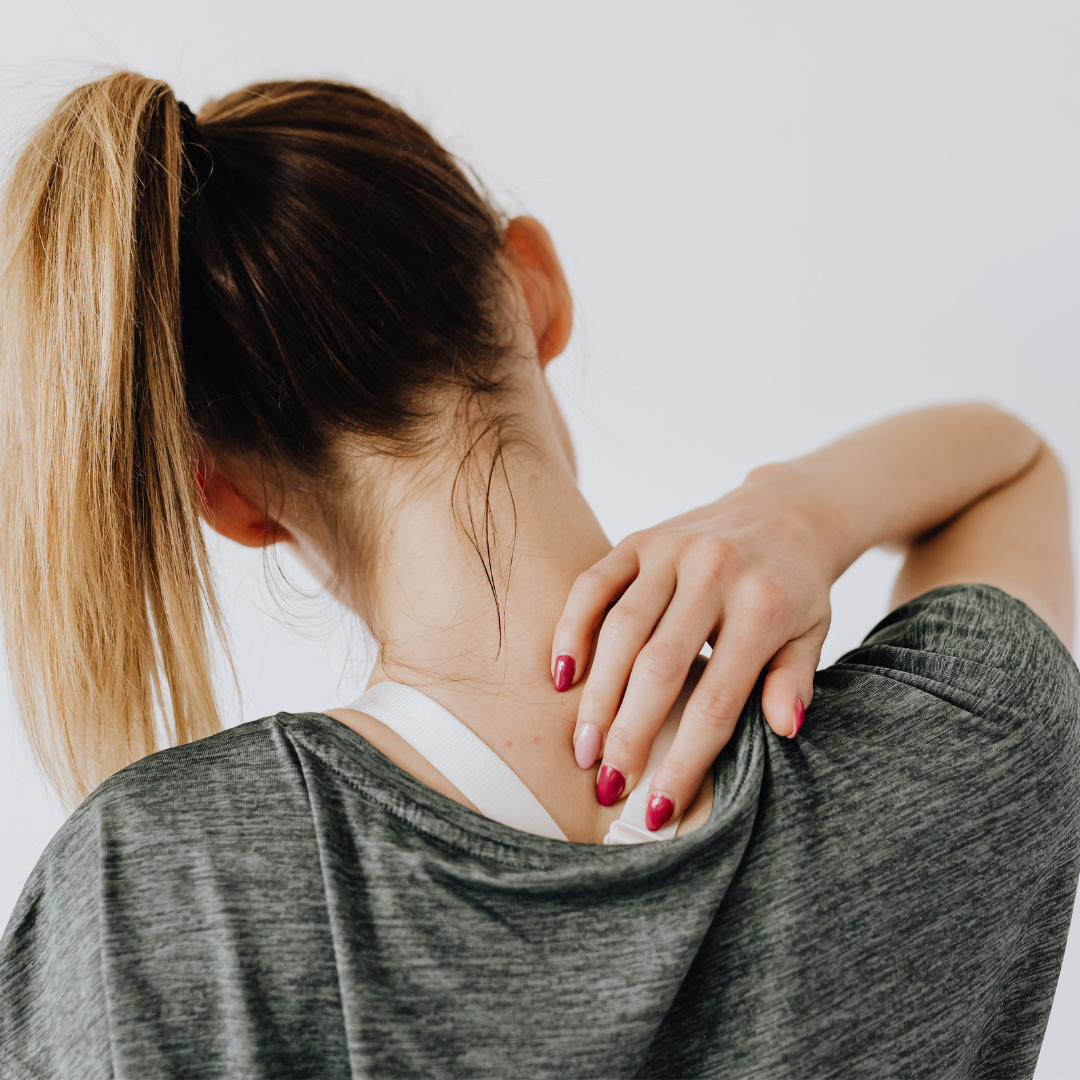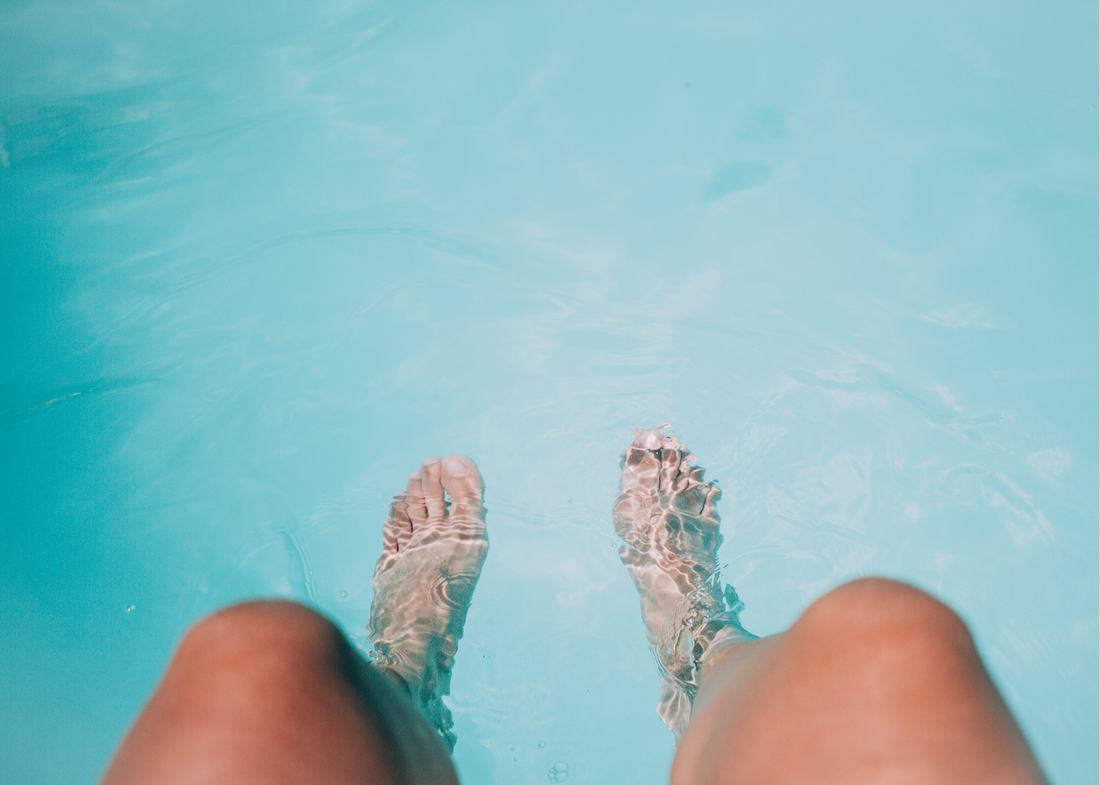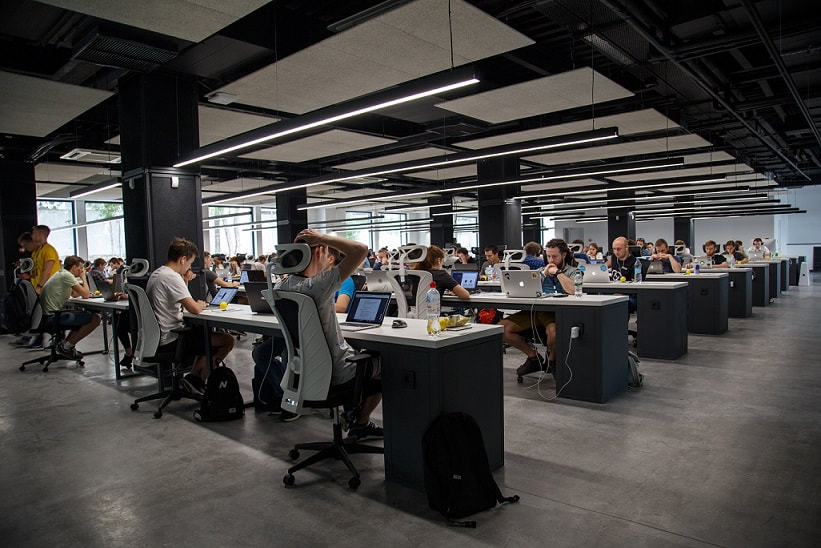|
By Megan Cornish, Pre/Post Natal Myotherapist I would like to first and foremost start this blog by talking about the idea of pregnancy related musculoskeletal aches and pains being “a normal and common part of pregnancy”. And while that may be so for the majority of pregnant women, my biggest pet peeve is when prenatal ladies are told that their back and/or hip pain is “normal” and to basically deal with it til the baby comes out. No further pain management strategies or options are discussed, and mama's are left concerned and in pain without a plan, and that in my opinion is a disservice to all women! I am writing this blog to solidify that just because these types of muscular aches and pains are frequent occurrences during pregnancy, you absolutely do not have to just ‘put up’ with the pain. Pain management strategies are definitely out there if needed - myotherapy being one of them - and I want ALL women to feel empowered to utilise these strategies as needed to feel the absolute best they can for the duration of their pregnancy. Please never feel that you need to just power on through pain. For the purpose of this blog we will learn why muscle and joint pain is common during pregnancy particularly in the lower back and hip regions. We will also look into how myotherapy works to reduce and manage pain as well as other alternatives and options available to you.
So why is it that the soft tissues of the lower back and hips get so sore? The most common regions to get affected by musculoskeletal aches during pregnancy are hip joints and surrounding muscles and the lower back. An element of the reason why this happens is going to be due to the growth of your baby throughout pregnancy and the pressure/added weight that this brings to the joints themselves. Wherever there is excess strain or pressure on our joints our muscles automatically guard to protect that joint - this will be the source of the pain. Another element to why you might experience pain in these regions is going to be because muscle relaxant hormones become involved, these hormones - relaxin and progesterone - cause a softening of tendons and ligaments surrounding the pelvis/lower back to prepare your body for the physical act of giving birth. As a result of the increasing laxity of these joint stabilisers muscles again begin to guard to compensate and protect the joints. How does myotherapy help to reduce and manage my pain? If you’ve had a massage or myotherapy treatment before you probably already know how amazing your body feels during and after the treatment. Its a very safe and effective way to manage and treat pain during pregnancy and works in a few ways to ease your discomfort. Massage releases muscular tension During your massage a few biomechanic functions are stimulated which is what is going to make the physical change to the musculoskeletal tissue as well as rewire the way your brain is processing the pain you are experiencing . Massage will release muscular tension by stimulating blood flow and increasing circulation to the muscle tissue. Endogenous opioids which are your “feel good” hormones also get released and therefore interrupt the pain cycle. The inflammatory response is our body’s healing response which is also triggered during the massage. Advanced Pain Relief Techniques Advanced techniques like dry needling and cupping are mighty helpful during pregnancy, and when they are used by a Myotherapists who are well educated on pre natal care they can provide a great amount of relief. We can use techniques like dry needling for reaching deeper into your glute muscles without needing to be heavy handed, and this can be incredible when you have sciatic pain or that build up of pressure around your pelvis and sacrum. Calm the CNS (Central Nervous System) Our central nervous system consists of our brain and spinal cord, this is how our body receives, responds and processes sensory information. During the massage sensory receptors carrying messages of sensation to the brain are calmed and therefore relaxing muscle tissue and reducing pain. Safely lay on your tummy! We have excellent pregnancy therapy cushions that allow you to safely lay on your tummy and protect your growing bump and sensitive breasts. All our mama’s simply love to be able to spend some time supported and face down, plus its a great position for us to really effectively manage back, neck, shoulder and hip pain. Taping your pelvis Pressure and instability in the joints of the pelvis are some of the most common complaints, especially when baby is becoming big! Taping can help to offload some of the pressure around your pelvis, or to support it if you’re starting to feel a bit wobbly, pinchy or unstable. Are there any other available strategies that I can utilise? There are also other ways that pain in pregnancy can be managed as well, this could be any or a combination of the following. Yoga and Exercise Recent studies of the benefits of movement throughout pregnancy show positive effects on reducing and managing pain while pregnant as well as improved general overall health and wellbeing. Yoga and gentle stretching are great ways to ease muscular discomfort and exercise will work to increase blood flow and support healthy muscle tissue. Thermotherapy (Heat Therapy) This is an easy and accessible way to get relief from pain at home, warm baths and warm wheat bags are able to be utilised to address muscle pain as this allows for opening of blood vessels to increase blood flow to the soft tissues. However with this management strategy please note we want WARM but not HOT. It can be potentially dangerous for bubs if a mothers internal body raises too much which is why hot tubs and spas are not advised. If you are ever unsure about this strategy consult your treating practitioner before use. Mindfulness and Meditation Mindfulness and Meditation exercises along with breath work are great techniques and strategies to use to manage pain. The body and mind are intertwined, especially when it comes to experiencing pain and discomfort. Studies have shown that a heightened nervous system can influence a person's overall experience of pain. By practising mindfulness and/or meditation your nervous system will relax and muscle tissue will follow, therefore decreasing pain. Pain management strategies are out there and available to be used to treat and manage pain experienced during pregnancy. Ladies! Please NEVER feel ashamed or hesitate when seeking these out. As I mentioned earlier the biggest thing I would like you to take away from this blog is just because pain is a common and usual part of pregnancy, this does not mean you have to just power on through! Do you need help from a Myotherapist who has a great understanding about pre and post natal bodies? Thats me!! Book a time to see me for pregnancy care, I'm here 5 days a week. By Duke Autret, Myotherapist Spinal stenosis is a condition that affects the spinal canal, the space within the spine housing the spinal cord and nerve roots. This narrowing of the spinal canal can exert pressure on the spinal cord and nerves, leading to a range of symptoms. In this article, we delve into the intricacies of spinal stenosis, exploring its causes, symptoms, and diverse treatment options Causes of Spinal Stenosis
Spinal stenosis can arise from various factors, including:
The symptoms of spinal stenosis manifest differently based on the severity and location of canal narrowing. Common symptoms include:
Effectively addressing spinal stenosis through myotherapy involves tailoring treatments to the individual's symptoms and the severity of the condition. Myotherapy, with its specialised focus on muscle and soft tissue therapy, offers targeted interventions for relief. Myotherapy Techniques
In conjunction with myotherapy techniques, managing spinal stenosis symptoms may involve specific medications by working with a GP: Non-Steroidal Anti-Inflammatory Drugs (NSAIDs): These medications help alleviate pain and reduce inflammation associated with spinal stenosis.
While complete prevention may not be possible, myotherapy emphasises proactive measures to reduce the risk of developing or worsening spinal stenosis:
Do you have a diagnosis of spinal stenosis? Management of this condition is possible, particularly in the early stages of diagnosis. Book with our team to discuss the most important steps you can take to care for your spine. By Rachael Bird, Myotherapist Lifting techniques can contribute to back pain - but like with so many things, its usually a combination of factors that lead to pain after lifting. While I love helping people with back pain, I also understand that a lot of lifting related pain can be avoided by taking your time and managing the loads well. Here’s some of the nuggets of wisdom I give to my patients who injure their back while lifting. Some of the most common factors I see that lead to this kind of back pain are:
Poor Lifting Techniques: Improper lifting techniques, such as bending at the waist rather than the knees, can strain the back muscles and lead to injury. Also keep in mind to be careful if you need to twist or lean while holding a heavy load. Generally these lifting techniques may be alright for a small number of light lifts, but if you know you need to lift a lot of items or you know that what you need to move will be heavy, pay closer attention especially as you start to notice fatigue. Overexertion: Moving heavy items like furniture without proper rest or support can cause muscle fatigue and strain. Take smart breaks if you are going to be lifting heavy or frequently, whether thats a one off event like moving house, or regular weight training at the gym. Lack of Conditioning: If you are not accustomed to heavy lifting or physical exertion, sudden lifting or moving activities can strain unconditioned muscles and lead to injury. Slowly build up your strength so that you can feel more resilient. If you have a sensitivity from a previous injury, take that into consideration when planning activities that need you to lift heavy things. Inadequate Support: Carrying heavy objects without proper support or assistance can put excessive stress on the back. Where you can, use a trolley, box or bag, or recruit a buddy to help move a large, awkward or heavy object. Repetitive Strain: Repeated bending, lifting, and carrying many items over an extended period can cause cumulative stress on the back muscles and spine. Take frequent breaks, even if the workload is light and especially if you are unaccustomed to lifting. Pre-existing Conditions: If you have a pre-existing back issue or sensitivity, you may be more susceptible to back pain when engaging in heavy lifting or moving activities. If you’ve been injured in the past, make sure you take it slow and take care of yourself. Are you planning to move house soon? Do you have a job that involves moving things around, loading or unloading things? Or do you know that you need to do some serious lifting in the near future? Here are some of my top tips to minimise the risk of back pain when you’re lifting: Use Protective Lifting Techniques: Lift with your legs, not your back. Bend your knees, keep your back straight, and use your leg muscles to lift. Engage your core. Ask for Help: When moving heavy or bulky items, ask for help or use moving tools (like a trolley or straps) to share the load. Are you moving house? Consider outsourcing it to a removalist, it will cost you money instead of injury and pain! Take Breaks: Don’t overexert yourself. Take breaks during moving tasks to rest and stretch your muscles. Take a break before your body feels like it needs a break - by the time you’re feeling it, you probably needed to rest 10 minutes earlier! Use Proper Equipment: Utilise proper lifting equipment or tools designed to reduce strain on your back. Stay Active and Strong: Regular exercise and maintaining overall fitness can help prepare your body for physical tasks like lifting and moving. Back pain resulting from heavy lifting or moving can be prevented by being mindful of these factors and taking appropriate precautions to protect your back and overall well-being. Have you already hurt your back lifting something heavy and now need some pain relief? I’m here for you! Book in with me and we can make a plan that looks at relieving the pain in the short term, and building up the strength and resilience long term as a preventative to future injuries. If you've ever had that one-sided sharp, catching pain in your neck or back that stops you moving even slightly towards that painful side, you've likely experienced a sprained facet joint. Facet joint sprains can be a source of intense back or neck pain, limiting our mobility and overall quality of life. This kind of injury is usually fairly short lived, but the first few days when its at its worst can be very highly sensitive and irritable. The acute phase usually doesn't last more than a week, and the pain usually subsides entirely within 2-3 weeks. These injuries can result from trauma (like a car accident), repetitive motions or rapid combination movements (like bending/twisting/lifting too quickly), or can be predisposed in degenerative conditions where the joint has been previously injured or where the joint isn't as healthy as it could be. Even though this condition is normally short-lived, it can be challenging to manage and exceptionally painful. Facet joints are small joints located at the back of the spine, connecting the vertebrae. When they are happy they provide stability and allow for easy non-painful movement in the spine. When these joints become injured or strained, it can be a very painful experience. Turning your head to the impacted side is usually very restricted by a sharp, bony pain. Often turning to the opposite side is much easier and without the same sting of instant pain.
Common causes include sudden trauma or whiplash type injuries, quick repetitive motions, or lifting and twisting at the same time. We'll often hear people say "I slept funny and now I can't turn my neck that way", this can be from sleeping in a weird or awkward position with the neck jammed up overnight. Symptoms of facet joint sprains include localised pain which is usually one sided, stiffness, reduced range of motion due to intense pain, and muscle spasms. The muscles around the impacted facet joint can go into a protective spasm to prevent you from moving, but the spasm itself can be very painful and can cause referral of pain to other areas. If the sprained facet joint is in your neck, its common to get a headache referred from the surrounding muscles. If the sprained facet is in your back, the referral patterns from an upper back facet is usually to the shoulders, or from a lower back facet to your hips. These sprains can significantly impact daily activities, especially things that need you to be able to move easily and safely, like doing headchecks in the car, getting in and out of bed, or going to the gym. When it comes to facet joint sprains, our myotherapists offer several benefits: Pain Relief: Myotherapists utilise a range of techniques, including deep tissue massage, trigger point therapy, and joint mobilisation, to alleviate pain associated with facet joint sprains. By targeting the affected area and surrounding muscles, our myotherapists help reduce muscle tension, release endorphins, and improve blood circulation, resulting in pain relief. Techniques that can be used in acute stages include things like dry needling which can resolve muscle spasm without applying broad pressure over the area. Muscle Relaxation and Joint Mobility: Facet joint sprains often lead to muscle spasms and restricted joint mobility. Myotherapy techniques such as gentle stretching, soft tissue mobilisation, and joint mobilisation help relax the muscles, increase flexibility, and restore normal joint motion. These interventions promote healing, reduce inflammation, and enhance overall range of motion. Gentle mobilisations encourage the correct glide of the facet joints to return, and using techniques like Muscle Energy Technique we can often reduce the protective spasm and improve the amount of movement and the irritability of the joint fairly quickly. Muscle Imbalance: Musculoskeletal imbalances can contribute to facet joint sprains. Myotherapists assess and correct muscle imbalances through targeted exercises, ergonomic modifications, and postural retraining. By addressing these underlying issues, your myotherapist helps improve your alignment, reduce stress on the facet joints, and prevent further injury. Strength and Stability: Myotherapy focuses not only on treating the immediate pain but also on building strength and stability to prevent future sprains, once the pain intensity allows us to do so. Myotherapists develop customised exercise programs to strengthen the muscles supporting the spine, enhancing overall spinal stability and reducing the risk of recurrent facet joint sprains. For a facet joint sprain, we usually expect this part of your treatment plan to begin about 2 weeks into your program, once the pain has settled and you have regained mobility. Education and Self-Care: Myotherapists play an essential role in educating our patients about facet joint sprains and self-care techniques. We provide guidance on proper body mechanics, ergonomics, and exercises to maintain a healthy spine and prevent further injuries. Empowering individuals with the knowledge to take control of their own well-being is a fundamental aspect of myotherapy. Facet joint sprains can significantly impact our daily lives, causing pain and limiting our mobility. Myotherapy offers a comprehensive approach to treating facet joint sprains by addressing pain, muscle tension, joint mobility, and underlying imbalances. Through techniques such as pain relief, muscle relaxation, joint movement correction, and strength training, myotherapy aims to provide lasting relief and prevent future sprains. If you're struggling with facet joint sprains, seeking the expertise of our qualified myotherapists can be a valuable step towards finding relief and regaining functionality. Book online with any of our great Myos, or call us on 03 8204 0970 for more information. Dry Needling is a manual therapy technique used by Myotherapists to help reduce pain and tension in muscles. We've previously discussed the similarities and differences between Dry Needling and Acupuncture, but you may still be wondering - how does Dry Needling actually work? The "Dry" Needle
The reason they are called "dry" needles is to differentiate them from hollow needles like the ones used for blood tests or vaccinations. A dry needle can't inject or withdraw fluids from your body. The needles themselves are ultra thin and flexible. They come with a guide tube to allow us to place them with care and precision. All needles used for dry needling are single use only. Where We Apply It Myotherapists use dry needling in painful, tight or restricted muscle groups. You may have heard about Trigger Points - those painful, tight bands that can form within a muscle over time, with repeated use or from injury. Dry needling is a technique that helps address these trigger point areas in a very specific and precise way. We assess the areas through watching you move and through palpating the muscles to find the best spots within the muscle to position the needle to relieve the trigger point. We also assess the surrounding joints and muscles, for example for hip pain we may find that dry needling in your lower back or in your thigh can help relieve pain and strain from your hip. What Happens When We Needle A Trigger Point? When we first insert the needle to the muscle, it can be felt as a little pinprick sensation on the skin. We then guide the tip of the needle into the right angle and depth of the muscle to directly stimulate the trigger point. This takes some skill and the ability to visualise in 3D the target muscle and the surrounding tissue like nerves, veins, arteries, bones and ligaments. By applying the needle into that trigger point, it causes a combination of chemical and electrical responses by the muscle. The micro damage causes by inserting the needle sends chemical messengers to the brain to get a healing response to occur. It can also cause a nerve impulse to occur, making the muscle twitch and release. To Stimulate or Not To Stimulate Because our aim in using dry needling is to get a change in the muscle tension, we often can stimulate the needle. This means we might gently move the needle in a pulsing in/out movement to repeatedly stimulate the trigger point, or we might twist the needle in a particular direction or in a series of back and forward movements. Stimulation of the needle can lead to more twitching, what we call Local Twitch Response. Dry needling can be effective even without the involuntary muscle twitch response. Some practitioners prefer a more intensive stimulation of the needles, however we prefer a gentle and slow approach. Does Dry Needling Hurt? In most cases, not really. Which is often surprising! The most common sensations you'll feel are the pinprick of the needle being positioned, a dull aching or tightening sensation around the needle, and the quick twitching response of the muscles releasing. The twitching can sometimes feel intense, but only lasts a very short time. After needling, some people can experience a little localised soreness at the sites of the needles, but most people just feel relief from tension and pain in those areas. Is Dry Needling Safe? In the hands of a trained practitioner, dry needling is a safe and effective technique. Myotherapists undergo many months of training and assessment in the skillful use of dry needling, however not all practitioners who offer dry needling are Myotherapists. Remedial Massage Therapists, Chiropractors, Physiotherapists, and other skilled practitioners can opt to undertake short courses in dry needling. Here in the Simple Wellness Myotherapy clinic, we only allow our Myotherapists to use dry needling on our patients, and we strongly believe that a weekend short course is not enough time to develop the skills needed to use dry needling safely and effectively. What Sort Of Pain Can Dry Needling Help Treat? Dry needling is great for releasing tight trigger point areas all throughout the body. It can be effective in treating headaches, neck and shoulder pain, back pain, bursitis, pain from disc injuries, sports injuries, plantar fasciitis - so many things! Want to try dry needling for your muscle pain? Book an appointment with one of our Myotherapists. Many people are familiar with the term "bulging disc" in regards to lower back pain. It can feel like an intense, sharp, stabbing sensation that can often travel down your leg through your hips and bum, sometimes as far as your feet. This is a common diagnosis when you start to develop back pain. You get a scan which shows changes in the disc, and the pain matches the effected nerve area. It can be a scary diagnosis. But you may be surprised to know that a lot of people who don't have pain have also been found to have changes in their discs. I find this study to be really encouraging, because it shows that people who have significant changes to their disc structure can still live a painfree life. It suggests that the disc changes may have already been there for some time before any painful symptoms even began, and gives hope that even if the structure doesn't change, that the pain can change. Lets have a look at this interesting literature review, particularly in regards to the findings around disc degeneration, disc bulges and disc protrusions. This is a literature review of 33 separate studies that investigated the imaging of spinal degeneration in painfree people ranging from their 20's to their 80's. It was published in the American Journal of Neuroradiology in 2014. In total, the review takes into account MRI and CT scan imaging on 3110 individuals with no painful symptoms. As you would likely predict, the number of findings increased with the participants age group, showing age-related degeneration occurs even in people who aren't experiencing pain. Lets have a look at the imaging results for the disc degeneration, bulge and protrusion categories: Disc degeneration - changes to the disc and surrounding vertebrae that result in loss of cushioning and support, may include signs of osteoarthritis at the joint. The Results: Disc degeneration in painfree participants was identified in:
Disc bulge - changes that alter the shape of the disc and can make portions of it "bulge" out of place, which can apply pressure to nearby nerves. The Results: Disc bulge in painfree participants was identified in:
Disc protrusion - changes to the annular membranes around the disc allows the disc nucleus to protrude and apply pressure to the nerves. The Results: Disc protrusion in painfree participants was identified in:
What does this mean for your bulging disc? It means that theres a good chance that your structural changes were already present before your back became painful. The area may be irritated or flared up right now, but these findings are a good indication that even if your scans don't change, your back pain still can settle down. It means that a scan showing disc changes doesn't have to be a life sentence of pain. Does this mean bulging discs DON'T cause pain, then? Don't get me wrong, bulging discs can be painful, and for some people it can be severe. This study just helps to show us that theres more to back pain that what shows up on MRI or CT scans. Structural changes are just one layer in the complex onion that is back pain. We can help! There are lots of ways we can change your experience of back pain through massage and myotherapy techniques like dry needling, taping and support, strengthening the surrounding muscles with exercises that are appropriate for you, and supporting your understanding of how your back functions. Book a time to come see us to talk about your back pain and creating a treatment plan to reduce it. If you have joint pain, chances are that hydrotherapy is going to be a huge help to you. A hydrotherapy pool is a warm water pool for doing exercises. Its quite different from swimming laps, although a lot of people find that swimming can be helpful too, if its not painful to do it. Can’t swim? It doesn’t matter, a hydrotherapy pool is usually quite shallow, it usually doesn’t have a “deep end” where you can’t touch the bottom. Our local hydrotherapy pool is at Knox Leisureworks in Boronia. The centre has a lot to offer, actually. There is the hydrotherapy pool, as well as a kids pool, a regular lap pool, a spa and sauna, and an onsite gym. So why is Hydrotherapy such a great option?
Buoyancy – Being in the water takes the pressure off the joint due to the water supporting your body weight. This makes it a great option for weight bearing joints like hips, knees and ankles, especially following injuries or surgeries like hip and knee replacements or fractured bones. Warmth – Heated hydrotherapy pools allow muscles to stay warm and relaxed while exercising. Typically a hydrotherapy pool is heated to about 33*, warmer than a normal swimming pool. Low Impact – Unlike running, doing exercises in water is friendly on vulnerable joints. The water doesn’t allow you to move as fast as in air, so the force of impact is less than running or jogging on a hard surface. Resistance – The water provides great resistance for strengthening the body, without feeling painful. It can be tiring afterwards due to the resistance of the water, though, so starting with short sessions is best. Low Cost – Knox Leisureworks has a great hydrotherapy pool. You can access the hydro pool with your standard pool entry fee of around $8, or if you plan to go frequently they have multi visit passes or memberships. What kinds of pains or conditions does it work well for? Hydrotherapy is fantastic for helping with pain in big joints and weight bearing joints, like hips, knees and ankles. Lower back pain can respond very well to hydrotherapy because of the way the water helps take pressure off the spine and support the weight of the body while you move. It can also be great for things like arthritis, and rehabilitation after a fracture or surgical repair. It can be great for general fitness, too! How do you get started? Initially just walking through the water can be really helpful. You can also include day to day movements like bending and straightening your knee or hip while standing with you back against the pool wall for support. You can use a floating board or pool noodle to hold onto and do gentle squats or lunges. If you’re uncertain, talk to us about specific pool exercises at your next appointment and we can help create a program tailored for you. If you work at a desk for hours on end, you know that it can be uncomfortable at the best of times. Office workers have just as much risk of injury and chronic pain as other more physically strenuous occupations. You may be at risk of issues including back pain, neck pain, repetitive strain injury or RSI and carpal tunnel syndrome.
So how can you minimise your chance of hurting yourself and stay at the top of your game? Our myotherapist Emily shares some of her tips for staying healthy and preventing pain and injury for office workers. Stretch often When you’re focused on your work, you often forget to shift position. Unfortunately, our bodies weren’t designed to stay in a position for hours at a time. That’s why the simplest tip is to stretch whenever you feel stiff, sore or fatigued. Stretching can also help to boost blood flow to the brain, which means you are more focused and productive. You can simply stretch at your desk if needed – stretch out your neck, shoulders and back, and do some circles with your ankles. But you can also do a standing stretch, which brings us to our next tip. Set yourself reminders to move Small amounts of movement throughout the day add up when it comes to preventing office injuries. But when you’re in the zone, you might forget! That’s why it’s useful to set yourself a reminder or alarm on your phone or computer. Aim for at least 1-2 minutes per hour of movement. This might be standing and stretching, going and getting a glass of water, making yourself a coffee or tea, going to the toilet or just walking around the office to get your muscles and joints moving. Give a sit/stand desk a try Desks that can alternate between a seated and standing position have become popular recently. They allow you the best of both worlds – you can sit for a bit, then switch to standing as a break from sitting. Have a chat to your employer about whether you can trial a sit-stand desk. The good thing is that many people find sit-stand desks boost productivity, so employers are often open to them. If you work for yourself or you are the boss, you can hire sit-stand desks and other equipment before purchasing. Make the most of lunchtime It can be tempting to eat lunch at your desk and power through the to-dos. But your lunch and break times are an opportunity to move around and give your muscles and joints a break as well. Get up and get moving. Head to a local park to have your lunch if it’s sunny outside. Grab a coffee from the café around the corner. You can even go for a brisk 5-minute walk around the block at the end of your break to wake up your brain and your body. That way, you’ll go back to work feeling refreshed. Get moving before or after work Some days you won’t get much time to move at work, so make the most of the hours outside of work. Find a way to get your body moving on a regular basis. This doesn’t mean you need to slog away at the gym for an hour every day. You can do some yoga stretches at home, walk the dog or go to the playground with your kids. If you do find yourself too tired to move after work, try getting up 15 minutes earlier and go for a walk around the block before work. It seems counter-intuitive, but exercise actually boosts your energy and relieves fatigue. Even a little bit each day will add up! Get a regular remedial massage or myotherapy treatment Your muscles and joints need care, just like every other part of you. That’s why regular treatments can help to prevent injury and pain. Our desk worker clients find that a treatment every 2-6 weeks helps to relieve tension and pain. Many report that they have fewer headaches, lower stress levels, improved sleep and mood and greater movement in joints and muscles. So if any of those are on your wish list, regular massage and myotherapy might be the answer! Is regular massage or myotherapy on your to-do list? Our myotherapist Emily is currently open for new clients. You can book with a session with her here. Do you love your heat pack? Me too!
There are plenty of reasons to keep your heat pack close by, and not just because we're entering winter! Heat treatment is great for muscle pain - its cheap, effective, and drug-free! Have you ever wondered why heating your sore muscles helps them so much? Some pains are categorised as ischaemic pain - that means that the tissue has a reduction of oxygen supply which is needed for normal cell activity. This tends to happen if we're in positions that compress or over stretch areas for a long time - like sitting at a desk for a few hours without getting up to move around. Heating an area increases the local blood flow, which means the blood vessels widen to get more fresh, oxygenated blood into your muscles and joints. What kind of pain should you use heat for? Many kinds of non-inflammatory pains will respond really nicely to heat, including things like cramping and spasming, stiffness and persistent tight or pulling muscles. Heat packs are easy to use for neck, shoulder, lower back or hip pain. If you have a lot of painful areas, a warm bath can be another great way of getting heat into your muscles - why not add some Epsom salts for the added magnesium benefits for sore, tight muscles! When should you not use heat? Avoid heating up any fresh injuries, especially if you have open wounds or if the injury has become infected. These kinds of injuries will be in the inflammatory stage of healing - you'll be able to tell because the area may be swollen, red and hot, and most likely it'll be much more sensitive than usual! Of course, you do need to be careful with heat packs or hot water bottles to make sure you don't burn yourself. Always wrap your heat pack or hot water bottle in a something like a pillow case, thin blanket or a towel so you don't have the hot surface directly on your skin. Using heat for too long might give you heat rash, so I usually suggest about 20 minutes at a time. Heat on its own is more for symptom relief than for resolving the underlying issue. If you have an injury or feel that you have a lot of long term tension built up in the muscles, book a treatment with your local Myotherapist. You might be familiar with that sharp, shooting pain sensation in your lower back, hip and leg. It can also be felt as numbness, pins and needles, tingling or burning type of sensations. Whatever way the pain or symptoms present, it runs along the Sciatic nerve - which is why this is referred to as Sciatica.
But did you know theres more than one potential cause behind this pain? Often this pain can be linked to muscle tension in the glutes and hips. The Sciatic nerve runs underneath the muscles of your glutes, and when it gets compressed there it can be a real pain in the bum - literally! Because this nerve runs all the way down to your feet, the jolts of nerve pain can sometimes be felt anywhere from just localised in your buttocks and hip, to the back of your thigh, behind the knee, straight down your lower leg and even into the base of your foot. The Sciatic nerve can be impacted at the root of the nerve near the spine, however this doesn't always mean there will be pain. Often this is called a Bulging Disc or Herniated Disc, but you might be surprised to learn that even though "Bulging Disc" sounds pretty awful, studies have shown that more than 50% of people over 40 with no pain symptoms at all can have a disc bulge show on scans. Irritation or compression of the Sciatic nerve can be common after serious trauma to your leg or lower back. Things like car accidents, falls, and horse riding accidents are all common high impact incidents that can aggravate the nerve. If you've had an injury like this, its wise to seek treatment for it. Do you have Sciatic nerve pain or nerve symptoms of numbness, tingling and pins and needles? Book an appointment with us to have an assessment and treatment. If we can resolve the issue, we'll create you a treatment plan that includes manual therapies and a take home exercise program. More serious causes do exist, so if treatment of the muscles and joints is not relieving your pain, we'll refer you to see your GP to rule out any serious structural or pathological conditions. |
Meet Our Team
We have a team of great practitioners available 7 days a week at our Rowville clinic. Archives
July 2024
Categories
All
|
Got a question about Myotherapy?
Contact Mel by phone, email or Facebook
|
Simple Wellness Myotherapy & Remedial Massage Clinic
Shop 12B 150 Kelletts Rd Rowville VIC 3178 |
Phone us on
03 8204 0970 |









 RSS Feed
RSS Feed